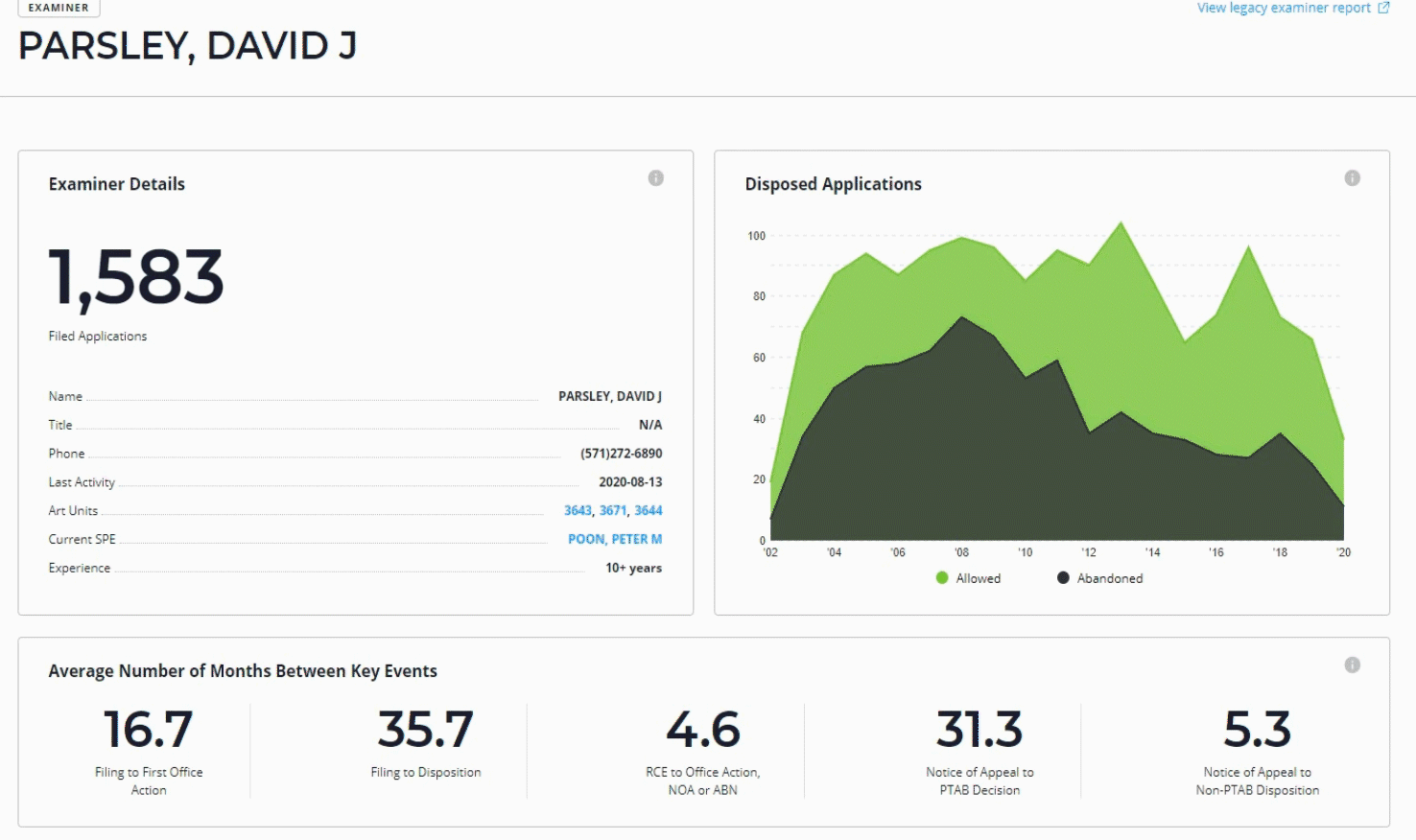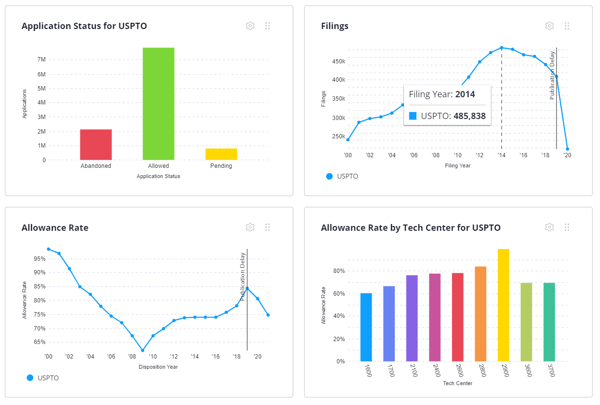In a saturated market, law firms are looking for ways to stand out and deliver the best legal services to their corporate clients. If you are looking to provide quality patent prosecution that ensures long-standing relationships, your firm needs to invest in data analytics.
We already know that companies are looking for counsel that backs decisions through data. As more companies rely on data to make their most important decisions, they expect their business partners to do the same. And insight from analytics can add nuance to the knowledge you have developed over your career.
Here are some ways that data can strengthen the way you do business, ensuring quality patent work for your most valuable clients.
Look to the past to predict the future
In-house teams are looking for patent professionals who understand the intricacies of the USPTO and can use that experience to ensure the success of their patent portfolio. But career knowledge can only go so far. And now, in this digital world, you can harness the power of data to see specific trends at the USPTO and how they impact different technology categories.
With patent analytics, you can map out a plan ahead of each filing, share that plan with your clients, and set expectations in terms of likelihood of allowance, cost, and time. Data adds a level of predictability to an otherwise complicated process, and communicating possible outcomes early and often is a simple way to ensure client trust.
Plan your next prosecution move
Clients are looking for success quickly and efficiently. As a patent practitioner, you aim to put your best foot forward in responding to decisions from the USPTO, but there is a certain amount of guesswork at play no matter your level of experience. Will an interview lead to an allowance? Should you appeal? Is it time to abandon?
Data removes some of that guesswork. Using a tool like Juristat Analytics when responding to an office action can help identify the shortest path to an allowance. Thanks to robust search and filtering capabilities, you can compare your prosecution to similar applications with the same number of OAs or rejection bases. And examiner metrics allow you to predict the behavior of your assigned examiner - you can even compare an examiner’s interview win rate to their RCE win rate to decide your next move. The more data you incorporate in your strategy, the better chance of success for your client (and, by extension, your firm).

Save money by knowing when to abandon
Patent prosecution is a balancing act, and the most talented patent attorneys know when to continue pushing a troubled prosecution or to abandon the current strategy. One approach is to review an examiner’s average office actions to allowance. Knowing the usual timeline for an examiner’s review process can help you decide if a patent application may be beyond the point of no return. Applications with more office actions than the examiner’s average are less likely to succeed.
With Juristat’s custom alerts, you can receive a notification for every application that has surpassed the examiner average, reminding you to thoroughly review the examiner’s profile and decide if the application is worth the time and money necessary to move forward. Nixing these applications before they become too costly is one way to show your client how familiar you are with their portfolio.
Assist in client research and development
Firms are always looking for additional ways to offer support to their client. Aside from the expected success from patent prosecution, there has to be a way to strengthen and solidify the working relationship. And one way to do this is to go beyond the realm of patent prosecution into the realm of industry research.
Business intelligence analytics can help corporate teams identify areas of strength, risk, and competition more effectively. With access to USPTO records organized by art unit, class, or technology center, patent attorneys have their finger on the pulse of developing tech. And side-by-side intelligence reports make it easy to compare data between different entities, whether companies or USPTO categories.
For example, 102 Forward Citation Reports can help clients identify which competitors are infringing on their issued patents. Get notified each time an examiner cites a client’s issued patent or patent application against competitors in 102 rejections. These reports can inform decisions to pay maintenance fees, uncover new licensing opportunities, and guide strategy to prevent potential infringement.
By looking into competitor development or highlighting emerging trends in a company’s industry, firms can broaden their services, prove their support, and go above and beyond what is expected in this type of client-attorney relationship.
Build confidence through transparency
In the end, corporate clients want IP professionals with proven experience, a speedy process, and a nuanced understanding of their bottom line. Alignment of client needs and firm priorities is key, and transparent communication is necessary to ensure a successful, symbiotic relationship.
While big data provides your team with all the information to make decisions, data visualization is an asset in communicating your vision to a corporate client. With persuasive and easy-to-read charts representing trends at the USPTO, you can quickly share strategy without bogging clients down with the minutiae of day-to-day processes. And this communication, regularly given, leads to trust and a mutually beneficial partnership.

Whether you're evaluating your own team's performance, preparing a client pitch, or looking for that next big client to add to your roster, patent analytics can transform your practice. Juristat combines business development and competitive intelligence in one powerful tool with access to your own performance metrics and those of every firm and company filing at the USPTO. And the law firms that leverage relevant and specific data in their business development strategy are better positioned to win over new clients while expanding current business relationships.
Curious how data can broaden your level of service and strengthen client relationships? Let’s find a time to talk.
(gradient).webp)

